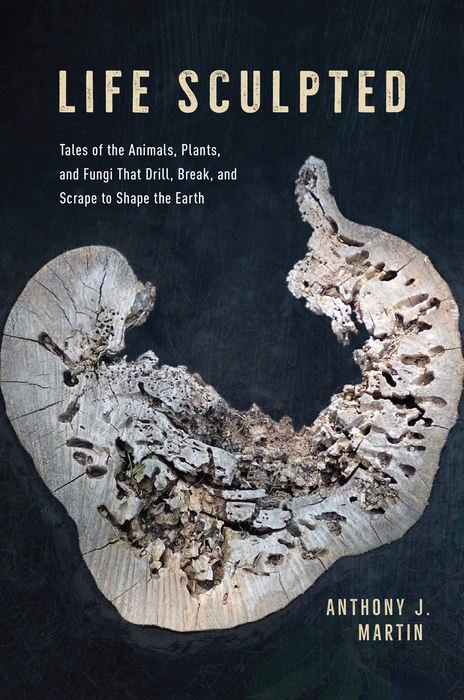The ordinary person looks at Georgia’s Stone Mountain and sees a solid, unmovable monolith. Emory University paleontologist Anthony Martin, who thinks in geologic time, sees something more akin to a giant sugar cube.

Credit: Anthony Martin
The ordinary person looks at Georgia’s Stone Mountain and sees a solid, unmovable monolith. Emory University paleontologist Anthony Martin, who thinks in geologic time, sees something more akin to a giant sugar cube.
Ever since the crystalized mass of igneous-born minerals rose from deep underground, pushed by the upwelling of magma that formed the Blue Ridge Mountains around 350 million years ago, the giant rock’s flanks have faced continuous assault — and not just from weather and water.
Stone Mountain “is fighting a battle against life, and life is winning,” Martin writes in the preface of his new book, “Life Sculpted: Tales of the Animals, Plants and Fungi That Drill, Break and Scrape to Shape the Earth.”
The University of Chicago Press is publishing “Life Sculpted” June 9, marking the fifth book during the past 10 years by Martin, professor of practice in Emory’s Department of Environmental Sciences.
Martin is a geologist and paleontologist focused primarily on ichnology — the study of traces of life such as tracks, burrows, nests and tooth marks. Among his discoveries are the only known burrowing dinosaur and the oldest bird tracks in Australia. His other passion is great science communication, which his books exemplify.
“Life Sculpted” is a follow-up to Martin’s 2017 book “The Evolution Underground: Burrows, Bunkers and the Marvelous Subterranean World Beneath Our Feet.” The current volume, also aimed at anyone interested in Earth sciences, goes beyond burrowing to cover how myriad forms of life have broken down the hard substrates of rock, shells, bones and wood during the past billion years.
“Yes, life can be hard,” Martin quips, “but life also makes everything less hard every day. Bioerosion shapes the world, literally. It’s changed entire ecosystems.”
It has also changed human history. Martin cites the wood-boring clams that perforated the hulls of the Spanish Armada, helping tip the odds toward the English Navy in 1588, when it won a decades-long fight for maritime dominance.
Bioeroders come in all sizes, he writes, from microbes that transport calcium away from rock and shells to elephants that dig caves with their tusks to obtain salt.
Bioeroders can change the soundscape as well as the landscape. In a chapter entitled “Your Beach Is Made of Parrotfish Poop,” Martin describes hearing “a crunching and popping reminiscent of sugary breakfast cereals meeting milk” while snorkeling over a Bahamian reef. The crunching, he explains, is actually the sound of parrotfishes biting out chunks of the reef with jaws and teeth capable of breaking apart rock. Reefs and the surrounding shallow-marine environments have been shaped by millions of years of such fishes gnawing on coral and defecating sediments.
Martin doesn’t just want readers to visualize and hear bioerosion. He also wants them to smell it.
He describes how dinosaurs chewed up rotten wood to get at insects and how insects, in turn, bored into the limb bones of large Jurassic dinosaurs that apparently became trapped in a stinking mud pit of decomposing flesh in Colorado.
The book gives many more familiar, modern-day examples of bioeroders. Georgia “hosts small, furry, bone-destroying beings that descend from the trees and eat skulls,” Martin writes. He knows this from personal observation of gray squirrels that relentlessly gnawed to bits a cow skull he and his wife had hanging in their courtyard.
“It’s their calcium supplement,” he explains.
And then there are all the bioeroders who have been busily at work on Stone Mountain.
Lichens colonized the enormous rock’s surface as soon as it emerged into the air, starting the process of soil formation that then allowed plants to take root. Animals began scurrying across and digging into its crumbling surface. Those animals eventually included humans, among the leading biological excavators of hard materials on the planet.
Humans have chiseled massive chunks from Stone Mountain’s side and removed tons of granite from its core. And any time you hike up Stone Mountain, Martin wants you to consider that you are taking a bit of its powdery dust with you on your footwear when you leave.
“The book is filled with ‘aha’ moments for the reader,” Martin says. “I want to encourage people to look for the evidence and to expand their awareness of how life is shaping the Earth.”




